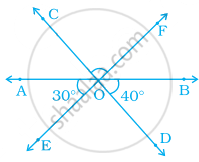Advertisements
Advertisements
Question
In the figure AB is parallel to CD. Find x, y and z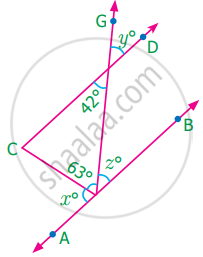
Solution
Given AB || CD
∴ Z = 42° ...[∵ Alternate interior angles]
Also y = 42° ...[vertically opposite angles]
Also x° + 63° + z° = 180°
x° + 63° + 42° = 180°
x° + 105° = 180°
x° + 105° – 105° = 180° – 105°
x° = 75°
∴ x = 75°, y = 42°, z = 42°
APPEARS IN
RELATED QUESTIONS
Find the value of the angles x, y, and z in the following
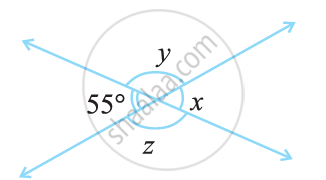
Lines PQ and RS intersect at point M. m∠PMR = x° What are the measures of ∠PMS, ∠SMQ and ∠QMR?
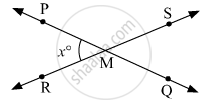
The angles at a point are x°, 2x°, 3x°, 4x° and 5x°. Find the value of the largest angle?
Find the angles x° and y° in the figure shown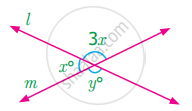
In the given figure, ∠8 = 107°, what is the sum of the ∠2 and ∠4?
Statements a and b are as given below:
a: If two lines intersect, then the vertically opposite angles are equal.
b: If a transversal intersects, two other lines, then the sum of two interior angles on the same side of the transversal is 180°.
Then ______.
Vertically opposite angles are always ______.
The sum of two vertically opposite angles is 166°. Find each of the angles.
If two angles have a common vertex and their arms form opposite rays (Figure), Then, write all the pairs of vertically opposite angles.
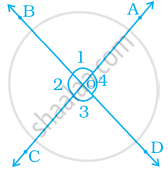
Three lines AB, CD and EF intersect each other at O. If ∠AOE = 30° and ∠DOB = 40° (Figure), find ∠COF.
